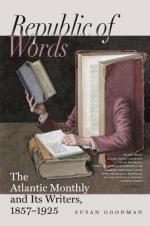The Civil War is begun. The King has made his desperate attempt to arrest the five members of Parliament, and been checkmated by Lucy Carlisle. So the fatal standard was reared, ten months ago, on that dismal day at Nottingham,—the King’s arms, quartered with a bloody hand pointing to the crown, and the red battle-flag above;—blown down disastrously at night, replaced sadly in the morning, to wave while the Cavaliers rallied, slowly, beneath its folds. During those long months, the King’s fortunes have had constant and increasing success,—a success always greatest when Rupert has been nearest. And now this night-march is made to avenge a late attack, of unaccustomed audacity, from Essex, and to redeem the threat of Rupert to pass in one night through the whole country held by the enemy, and beat up the most distant quarters of the Roundheads.
II.
THE CONDITION OF THE TIMES.
It is no easy thing to paint, with any accurate shadings, this opening period of the English Revolution. Looking habitually, as we do, at the maturer condition of the two great parties, we do not remember how gradual was their formation. The characters of Cavalier and Roundhead were not more the cause than the consequence of civil strife. There is no such chemical solvent as war; where it finds a mingling of two alien elements, it leaves them permanently severed. At the opening of hostilities, the two parties were scarcely distinguishable, in externals, from each other. Arms, costume, features, phrases, manners, were as yet common to both sides. On the battlefield, spies could pass undetected from one army to the other. At Edgehill, Chalgrove, and even Naseby, men and standards were captured and rescued, through the impossibility of distinguishing between the forces. An orange scarf, or a piece of white paper, was the most reliable designation. True, there was nothing in the Parliamentary army so gorgeous as Sir John Suckling’s troop in Scotland, with their white doublets and scarlet hats and plumes; but that bright company substituted the white feather for the red one, in 1639, and rallied no more. Yet even the Puritans came to battle in attire which would have seemed preposterously gaudy to the plain men of our own Revolution. The London regiment of Hollis wore red, in imitation of the royal colors, adopted to make wounds less conspicuous. Lord Say’s regiment wore blue, in imitation of the Covenanters, who took it from Numbers, xv. 38; Hampden’s men wore green; Lord Brooke’s purple; Colonel Ballard’s gray. Even the hair afforded far less distinction than we imagine, since there is scarcely a portrait of a leading Parliamentarian which has not a display of tresses such as would now appear the extreme of foppery; and when the remains of Hampden himself were disinterred within twenty-five years, the body was at first taken for a woman’s, from the exceeding length and beauty of the hair.




